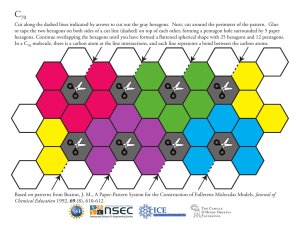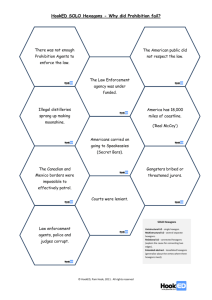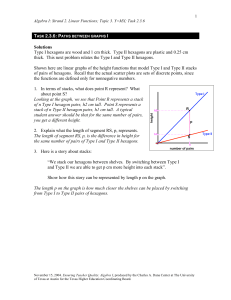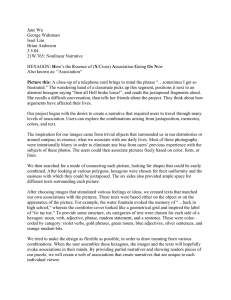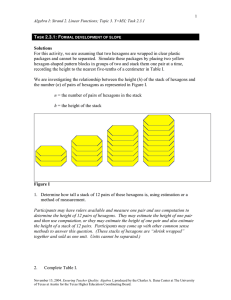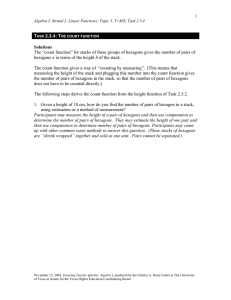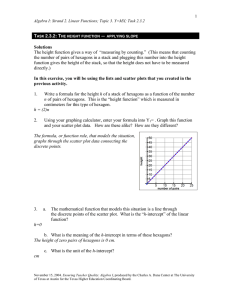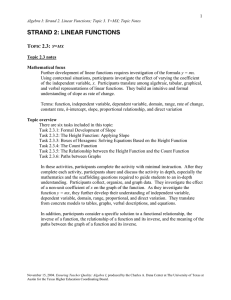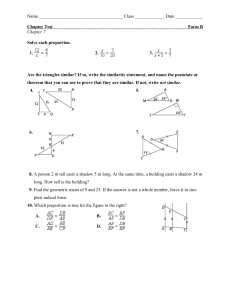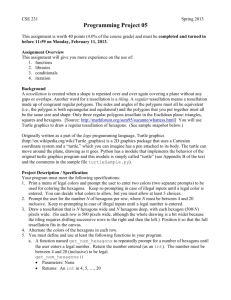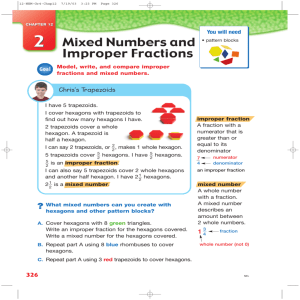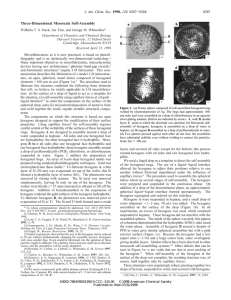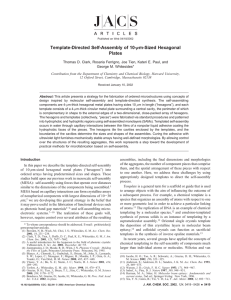If we use hexagons that are 1 cm in height,... original problem is “the height of the stack of hexagons... Solutions
advertisement
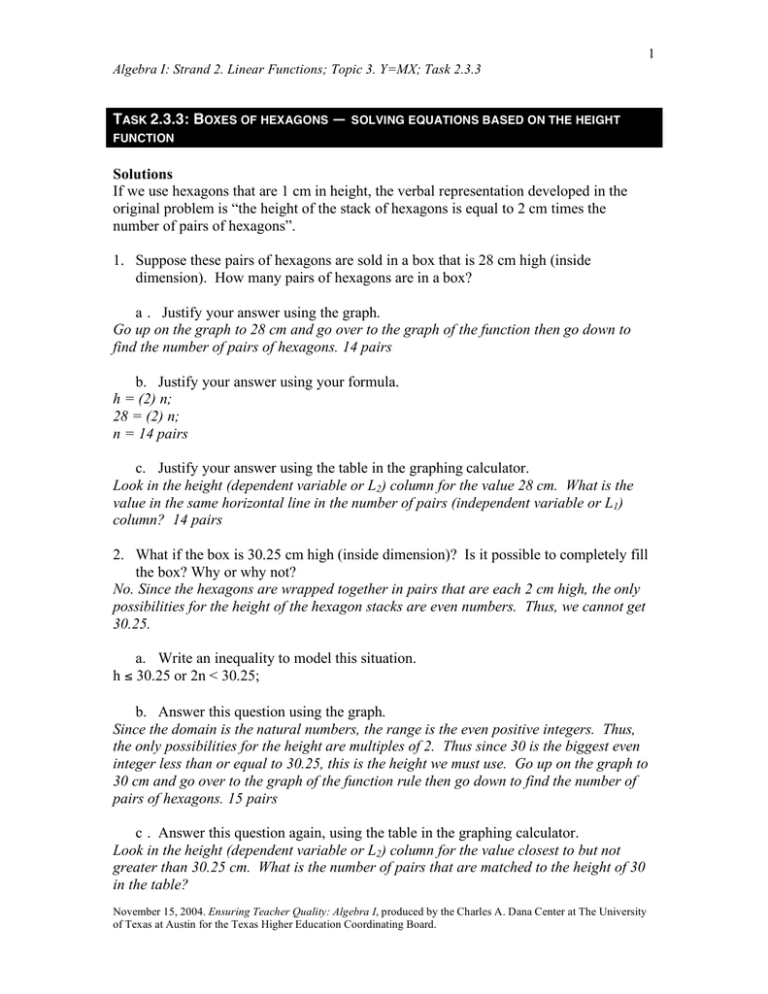
1 Algebra I: Strand 2. Linear Functions; Topic 3. Y=MX; Task 2.3.3 TASK 2.3.3: BOXES OF HEXAGONS — SOLVING EQUATIONS BASED ON THE HEIGHT FUNCTION Solutions If we use hexagons that are 1 cm in height, the verbal representation developed in the original problem is “the height of the stack of hexagons is equal to 2 cm times the number of pairs of hexagons”. 1. Suppose these pairs of hexagons are sold in a box that is 28 cm high (inside dimension). How many pairs of hexagons are in a box? a . Justify your answer using the graph. Go up on the graph to 28 cm and go over to the graph of the function then go down to find the number of pairs of hexagons. 14 pairs b. Justify your answer using your formula. h = (2) n; 28 = (2) n; n = 14 pairs c. Justify your answer using the table in the graphing calculator. Look in the height (dependent variable or L2) column for the value 28 cm. What is the value in the same horizontal line in the number of pairs (independent variable or L1) column? 14 pairs 2. What if the box is 30.25 cm high (inside dimension)? Is it possible to completely fill the box? Why or why not? No. Since the hexagons are wrapped together in pairs that are each 2 cm high, the only possibilities for the height of the hexagon stacks are even numbers. Thus, we cannot get 30.25. a. Write an inequality to model this situation. h ≤ 30.25 or 2n < 30.25; b. Answer this question using the graph. Since the domain is the natural numbers, the range is the even positive integers. Thus, the only possibilities for the height are multiples of 2. Thus since 30 is the biggest even integer less than or equal to 30.25, this is the height we must use. Go up on the graph to 30 cm and go over to the graph of the function rule then go down to find the number of pairs of hexagons. 15 pairs c . Answer this question again, using the table in the graphing calculator. Look in the height (dependent variable or L2) column for the value closest to but not greater than 30.25 cm. What is the number of pairs that are matched to the height of 30 in the table? November 15, 2004. Ensuring Teacher Quality: Algebra I, produced by the Charles A. Dana Center at The University of Texas at Austin for the Texas Higher Education Coordinating Board. 2 Algebra I: Strand 2. Linear Functions; Topic 3. Y=MX; Task 2.3.3 TASK 2.3.3: BOXES OF HEXAGONS — SOLVING EQUATIONS BASED ON THE HEIGHT FUNCTION For this activity, we are assuming that two hexagons are wrapped in clear plastic packages and cannot be separated. Simulate these packages by placing two yellow hexagon-shaped pattern blocks in groups of two and stack them one pair at a time, recording the height to the nearest centimeter in Table I. We are investigating the relationship between the height (h) of the stack of hexagons and the number (n) of pairs of hexagons as represented in Figure I. n = the number of pairs of hexagons in the stack h = the height of the stack Figure I If we use hexagons that are 1 cm in height, the verbal representation developed in the original problem is “the height of the stack of hexagons is equal to 2 cm times the number of pairs of hexagons”. 1. Suppose these pairs of hexagons are sold in a box that is 28 cm high (inside dimension). How many pairs of hexagons are in a box? a . Justify your answer using the graph. November 15, 2004. Ensuring Teacher Quality: Algebra I, produced by the Charles A. Dana Center at The University of Texas at Austin for the Texas Higher Education Coordinating Board. 3 Algebra I: Strand 2. Linear Functions; Topic 3. Y=MX; Task 2.3.3 b. Justify your answer using your formula. c. Justify your answer using the table in the graphing calculator. 2. What if the box is 30.25 cm high (inside dimension)? Is it possible to completely fill the box? Why or why not? a. Write an inequality to model this situation. b. Answer this question using the graph. c . Answer this question again, using the table in the graphing calculator. November 15, 2004. Ensuring Teacher Quality: Algebra I, produced by the Charles A. Dana Center at The University of Texas at Austin for the Texas Higher Education Coordinating Board.
